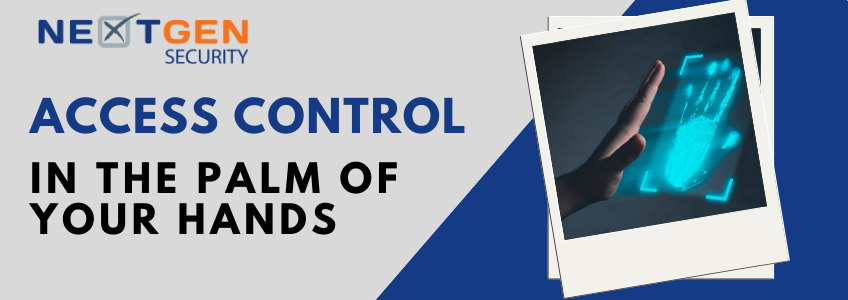Touchless solutions are being sought as never before in the fight against spreading the Corona virus. Fortunately, touch-free palm detection can be employed in various access control applications; it provides secure and credentialed access while also eliminating hand-to-hand contact of surfaces. Although palm print recognition first took on traction in the early 2000’s, it’s emerging as the biometric verification solution of choice for many in this age of COVID-19.
Biometric reader capability has improved dramatically over the years and palm vein is actually one of the most secure biometrics out there. It also ranks as the very first contactless personal identification system. It works by capturing an image of a person’s vein pattern while radiating it with near-infrared rays.
The caveat? It can detect the vein pattern on a human palm with paramount precision. The process is actually pretty simple. When the sensor emits a near-infrared ray towards the palm of the hand, the image pattern is recorded and stored in an encrypted format in a database, token or smart card as a reference for future comparison.
Each time an enrolled person wants to be granted access, the newly captured image is processed and compared to the stored one for verification. Palm detection is super accurate because the vein pattern of the human palm is unique to each individual.
Another important perk to palm print detection is that it doesn’t pose the same privacy concerns as other biometric applications, such as facial recognition. Many people have concerns about their facial data being in the possession of various tech companies. Many also have hesitations about pressing their finger on a dirty scanner at an access checkpoint. That hesitation has never been more justified as it is now, when COVID-19 calls for more contactless solutions.
Touchless palm verification speaks directly to these challenges because palm recognition systems work by identifying vein patterns and lines and creases on the hands surface using cameras and infrared to avoid contact. Compared with the other physical biometric characteristics, palm print authentication has several other advantages: low-resolution imaging, low-intrusiveness, stable line features, and low-cost capturing device. Palm print based personal verification is quickly reclaiming its place in the biometric family because of its ease of acquisition, high user acceptance and reliability. And, perhaps most importantly in these times, because it is contactless!
Facilities of all kinds are looking to implement reliable touchless solutions and are turning to NextGen’s experience and expertise to help them migrate to safe, touchless access control solutions. Call on us to help you implement the best possible security solutions for your facility.

